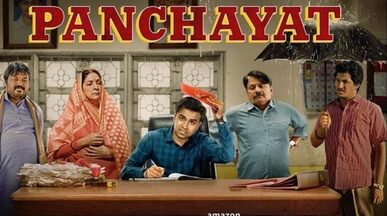Nagpur authorities have imposed a curfew in multiple areas following violent clashes sparked by demands to relocate the tomb of Mughal emperor Aurangzeb from Maharashtra. The unrest has led to injuries, arson, and heightened communal tensions in the city.
The curfew, enacted under Section 163 of the Bhartiya Nagarik Suraksha Sanhita, affects the police station jurisdictions of Kotwali, Ganeshpeth, Tehsil, Lakadganj, Pachpaoli, Shantinagar, Sakkardara, Nandanvan, Imamwada, Yashodharanagar, and Kapilnagar. Nagpur Police Commissioner Ravinder Kumar Singal announced that these restrictions will remain until further notice to restore order and prevent further violence.
The turmoil began when right-wing groups, including the Vishwa Hindu Parishad and Bajrang Dal, organized protests demanding the removal of Aurangzeb’s tomb, located in Khuldabad, Chhatrapati Sambhajinagar district . Protesters argue that the tomb symbolizes historical atrocities committed during Aurangzeb’s reign from 1658 to 1707. During the demonstrations, participants allegedly burned effigies of the Mughal emperor, intensifying the situation.
Tensions escalated dramatically when rumors circulated about the desecration of a religious text during the protests. This led to large-scale stone-pelting, vandalism, and arson. Approximately 40 vehicles, including two earthmovers, were set ablaze, and police vans were damaged. Several police personnel, including two senior officers, sustained injuries while attempting to control the chaos.
In response to the violence, authorities have detained 47 individuals suspected of involvement in the clashes. A heavy police presence has been established in affected areas, particularly in the Mahal neighborhood, to prevent further incidents. Prohibitory orders under Section 144, banning large gatherings, have been enforced to maintain public safety.
Chief Minister Devendra Fadnavis has appealed for peace and urged citizens to refrain from actions that could exacerbate communal tensions. He emphasized the importance of resolving disputes through legal and peaceful means, acknowledging the sensitivity surrounding historical figures like Aurangzeb.
The controversy over Aurangzeb’s tomb has been brewing for some time. Allies of Prime Minister Narendra Modi’s Hindu nationalist government have labeled Aurangzeb a “thief and looter,” calling for the tomb’s demolition. Udayanraje Bhosale, a Bharatiya Janata Party Member of Parliament from Maharashtra, urged authorities to “send a bulldozer and raze his grave,” reflecting sentiments that view Aurangzeb’s legacy negatively.
However, the tomb is a protected site under the Archaeological Survey of India , presenting legal challenges to any attempts at demolition. Chief Minister Fadnavis acknowledged these legal constraints, stating that while there is a desire for action, it must occur within the framework of the law.
The situation has also taken a political turn, with opposition parties criticizing the government’s handling of the unrest. Congress MP Shyamkumar Barve condemned the violence and called for communal harmony, urging both communities to maintain peace and accusing the government of diverting attention from pressing issues through such incidents.
The unrest has significantly impacted daily life in Nagpur. Businesses have shut down, public transportation is disrupted, and residents are urged to stay indoors. Educational institutions in the affected areas have suspended classes, and examinations have been postponed to ensure student safety.
Community leaders from various religious groups are actively engaging in dialogue to defuse tensions. They are appealing to the public to remain calm and not succumb to provocations that could lead to further violence. Peace committees have been formed to monitor the situation and promote communal harmony.
The state government has announced compensation for those affected by the violence, including injured individuals and owners of damaged property. A thorough investigation has been initiated to identify the perpetrators and prevent future incidents.
This episode highlights the complex interplay between historical narratives and contemporary politics in India. The legacy of the Mughals, particularly figures like Aurangzeb, remains a contentious issue, reflecting deep-seated historical grievances and differing interpretations of India’s past.



 Sensex Bounces Back After Five Days On Gains In Banking Shares, Global Rally
Sensex Bounces Back After Five Days On Gains In Banking Shares, Global Rally 